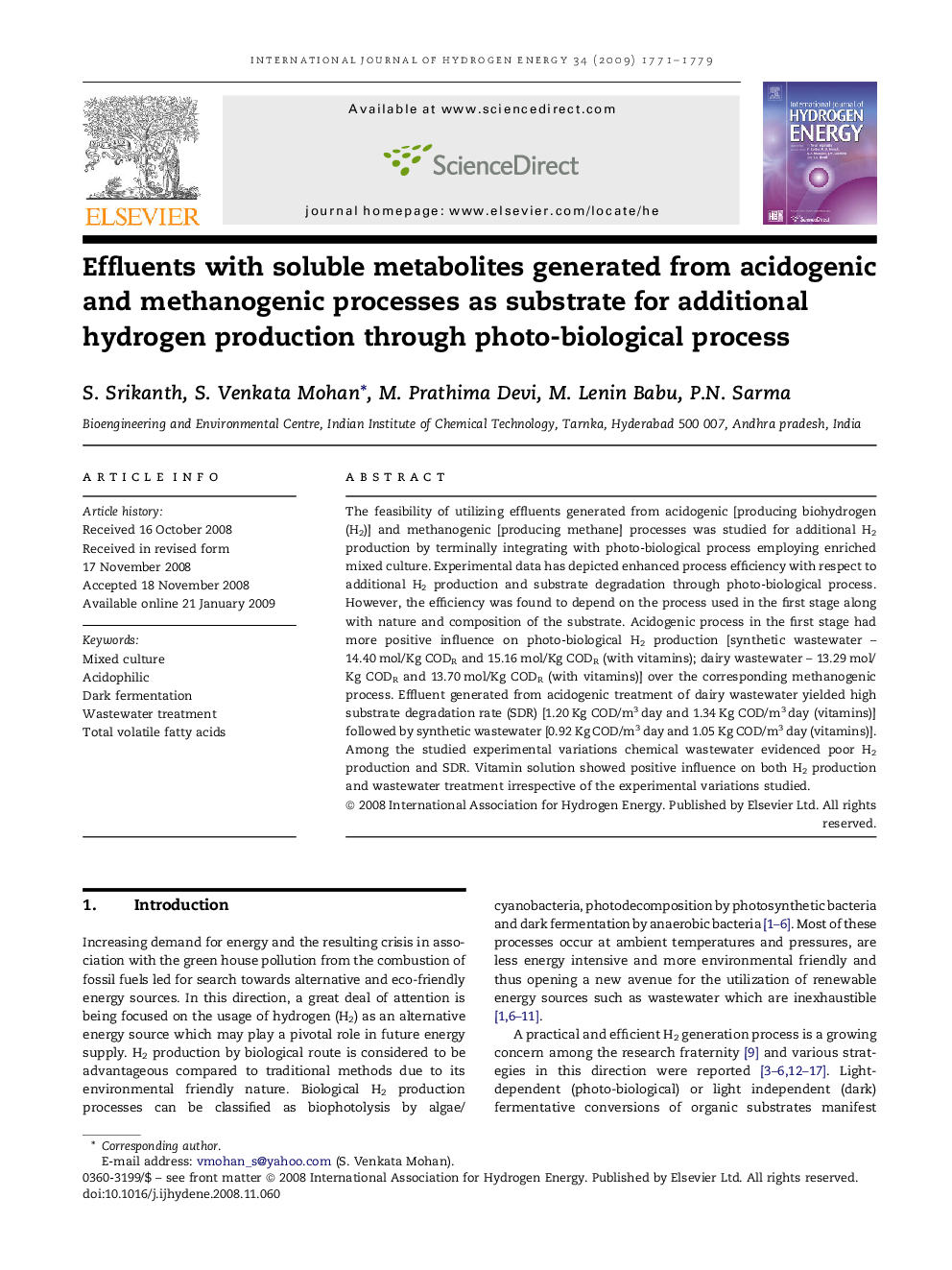| کد مقاله | کد نشریه | سال انتشار | مقاله انگلیسی | نسخه تمام متن |
|---|---|---|---|---|
| 1274297 | 1497638 | 2009 | 9 صفحه PDF | دانلود رایگان |

The feasibility of utilizing effluents generated from acidogenic [producing biohydrogen (H2)] and methanogenic [producing methane] processes was studied for additional H2 production by terminally integrating with photo-biological process employing enriched mixed culture. Experimental data has depicted enhanced process efficiency with respect to additional H2 production and substrate degradation through photo-biological process. However, the efficiency was found to depend on the process used in the first stage along with nature and composition of the substrate. Acidogenic process in the first stage had more positive influence on photo-biological H2 production [synthetic wastewater – 14.40 mol/Kg CODR and 15.16 mol/Kg CODR (with vitamins); dairy wastewater – 13.29 mol/Kg CODR and 13.70 mol/Kg CODR (with vitamins)] over the corresponding methanogenic process. Effluent generated from acidogenic treatment of dairy wastewater yielded high substrate degradation rate (SDR) [1.20 Kg COD/m3 day and 1.34 Kg COD/m3 day (vitamins)] followed by synthetic wastewater [0.92 Kg COD/m3 day and 1.05 Kg COD/m3 day (vitamins)]. Among the studied experimental variations chemical wastewater evidenced poor H2 production and SDR. Vitamin solution showed positive influence on both H2 production and wastewater treatment irrespective of the experimental variations studied.
Journal: International Journal of Hydrogen Energy - Volume 34, Issue 4, February 2009, Pages 1771–1779